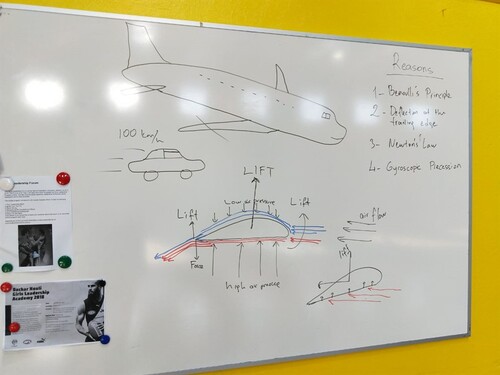

Old Melbourne Goal Excursion
On Monday the 14th of May all Year 9 students went to the Old Melbourne Goal in the CBD as part of their history studies in Humanities class. Inside the Gaol, they got to see where dangerous criminals were held alongside petty offenders, the homeless and the mentally ill. Students also participated in an experience set in the original cell block inhabited by the likes of Squizzy Taylor, Chopper Read and other various unsavoury characters. They also had the opportunity to role play in the Old Magistrate court where many of Victoria’s most notorious criminals stood for their committal and bail hearings. Students had the opportunity to stand in the dock, sit in the judge’s chair or join the crowd in the public gallery.




Messages from the Physics Department
Year 10 Physics Incursion
Eastmeadows Physics Department invited Boomerang Throwing Coach, Bruce Carter to the school to give an incursion on the art of boomerang throwing. After a brief discussion on aerodynamics of boomerangs, Mr Bruce gave historical and cultural information regarding the significance of boomerangs. Students spent the time learning how to throw and catch boomerangs and played many games. Year 10 student, Umamah Raza, won a boomerang by performing a trick catch. Congratulations!


.jpeg)
.jpeg)

Year 11 Physics Excursion
Eastmeadows VCE Unit 1 Physics students visited LaTrobe University together with their fellow students from Keysborough students for an excursion regarding Radioactivity.
After the introduction, students studied radioactive samples and performed a number of experiments. During the workshop, they explored the random nature of the radioactive-emission; experienced alpha, beta and gamma radiations' penetration power; and monitored and plotted the average number of counts recorded by the Geiger counter for increasing distances from the source.
For those who have no idea what that means, enjoy the pictures!

.jpeg)



Year 10 Humanities Excursion to the Immigration Museum
On Tuesday the 5th of June all Year 10 Students went to the Immigration Museum in the CBD. Students took part in the “Leaving and Arrival” workshop as part of their Migration Experiences unit for Humanities. Students participated in an activity where groups were provided with a suitcase of items, and they had to work out who the migrants were, when they arrived to Australia and why they came. Students then went through the galleries at the museum discovering more and more about the different waves and personal stories of migration. The excursion also involved a short walk to Sandringham Bridge where the migration facts and figures are displayed on glass panels based on their countries of origin. We hope this experience inspires all our students to learn about their own family’s migration stories to Australia.





Biology Students Visit La Trobe University
Year 11 Unit 3 Biology students spent half a day at La Trobe University on 14th May, taking part in ELISA (Enzyme-Linked Immunosorbent Assay) ASSAY.
The morning session involved research work with flu antibody detection. We then went to attend a lecture given by a university professor on the immune system, which demonstrated various components of the immune system. The 2nd session involved Unit 3 AOS 2 revision given by Dr Jef which allowed students to practise exam questions and skill strategies. Students enjoyed laboratory work as the task gave students a chance to actually do the ELISA test. The background information of the topics is given below:
Practical workshop: Immunology and Disease
Background information:
Infection with a pathogen or foreign particle produces a range of defence responses in humans. One of the responses is the stimulation of antibody production by the immune system.
Antigens are usually proteins (foreign to the body), that can trigger an immune response.
Antibody production is just one of these responses!
Antibodies (also known as Immunoglobulins or Ig) are proteins that the body makes in response to an antigen. Every different antigen that enters a body induces a specific antibody to be produced. After exposure to a pathogen or its antigens, the matching antibody-producing cells are primed to respond very rapidly when the antigen is detected again. They release large amounts of antibodies specific to that antigen into the blood and stimulate killer cells to destroy the invading cells.
Influenza is common in many parts of the world and is caused by viruses.
Task: The constant evolution of the influenza virus poses an unpredictable threat of high fatality pandemics. Most people do not consider influenza (the flu) to be a deadly disease. However, the 1918 Spanish flu outbreak, estimated to have killed 30-40 million people, shows that it can be catastrophic! Many of us are exposed to and recover from the seasonal flu on an annual basis, but occasionally a flu strain emerges that is new to human immune systems and can potentially lead to a pandemic.
Students were presented with a simulated case study in which a spreading cluster of high fatality influenza-infection related deaths are newly identified in South East Asia. Using microscopy, students identified the different cells that participate in an innate immune response and then discovered which immune cells are responsible for the new high fatality influenza infections.
In the next experiment, students used an Enzyme-Linked Immunosorbent Assay (ELISA) to diagnose whether 'patients' arriving back into Australia with flu-like systems are infected with the new influenza strain. Here, students gained hands on knowledge about the properties of adaptive cells and why antibody-based technology can be used for medical diagnostics and disease research purposes.
Finally, by comparing the gene sequences of seasonal and suspected pandemic influenza strains, students learned how PCR and gene sequencing technology is currently used for disease surveillance and monitoring around the world. An additional seminar on the immune system provided useful revision for our students.
Dr Arshad Mahmood